We occasionally link to goods offered by vendors to help the reader find relevant products. Some of these may be affiliate based, meaning we earn small commissions (at no additional cost to you) if items are purchased. Here is more about what we do.
With warm and attractive hues, wood adds a striking touch to any kitchen decor.
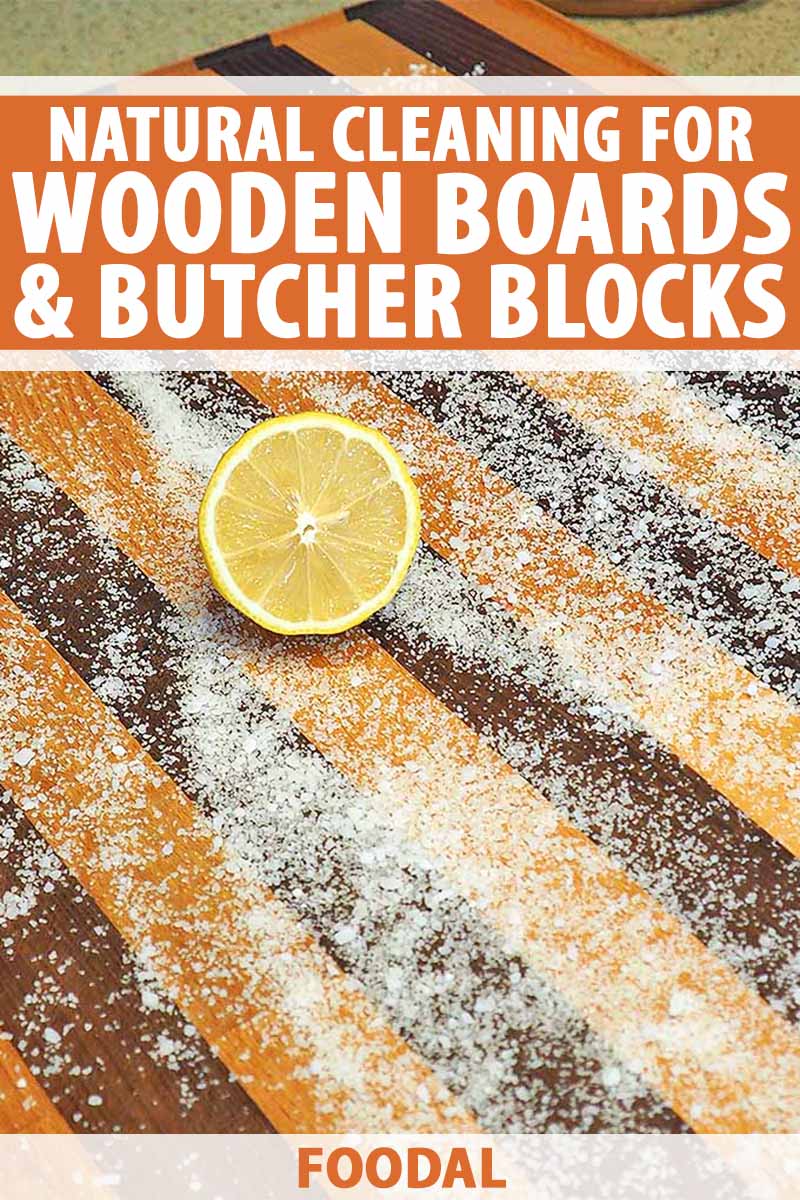
And it’s one of the best materials for making butcher blocks and cutting boards, also helping to protect and maintain a keen knife edge.
But, like any hardworking tool, these do take a beating as we slice, dice, and prepare a variety of foods on their smooth surfaces each day.
Unlike other materials that can take the heat of a dishwasher cycle, or handle a dose of full-strength bleach to kill germs and bacteria, natural wood products require some specialized care to keep them clean, sanitized, and well-maintained.
Join us now for a look at the best – and most natural – ways to clean, sanitize, lift stains, and maintain your butcher block or wood cutting board.
How to Naturally Clean and Care for Wood Cutting Boards
What to Avoid
Butcher blocks and wood cutting boards are constructed of milled lumber that’s cut using flat panels, with either an edge grain or an end grain, which are then glued together in a variety of shapes and sizes.
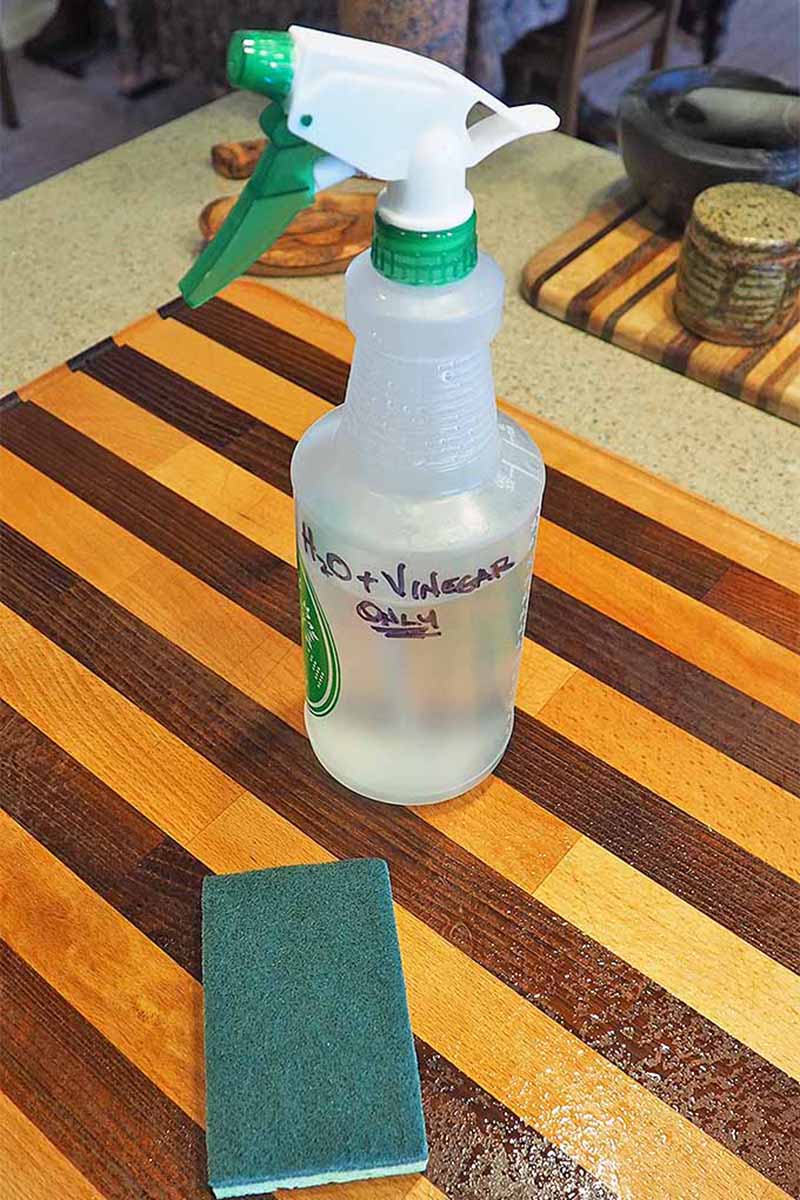
Due to the porous, cellular nature of this natural product, and the glue used to join the pieces, certain cleaning techniques should be avoided. Let’s take a look at those up front.
Soaking in Water
One of the worst and most harmful techniques to completely shun is soaking your wood board in water for any length of time.
Wood quickly absorbs water, which can cause it to swell, crack, or warp. With the introduction of water and the effect it has on the wood, the glued pieces will have a tendency to separate.
Full-Strength Vinegar
You should also steer clear of full-strength vinegar, as the acetic acid it contains can corrode and weaken the glue used to join pieces, potentially allowing moisture to enter after every cleaning.
You should always dilute vinegar before applying it to the board – we’ll explain our perfect ratio of vinegar to water a bit later, so keep reading.
Full-Strength Bleach and Other Chemical Household Cleaners
Full-strength bleach is another sanitizer that shouldn’t be used on wood. Not surprisingly, bleach can lighten the color!
This powerful cleaning product should also be diluted with water first before cleaning, and we recommend only using it sparingly.
When cleaning surfaces used in food preparation, you must always stay away from using furniture polish, paste wax, and other household cleaners that contain harsh chemical compounds.
If they are not labeled as food-safe cleaning products, you need to avoid them.
Also, you may have heard that tung oil, known for its protective water resistance, is fine for use on wood cutting boards. Keep in mind that most tung oil products typically consist of various mixtures of varnish, which is not food-safe unless thoroughly cured.
While there are pure tung oils on the market, carefully read the labels to ensure they are made with food-grade materials.
So, what are the best ways to safely clean and sanitize wood while keeping its beautiful, lustrous appearance?
Glad you asked, because we have the answers! Let’s begin…
Daily Cleaning
With your own personal health and safety at the forefront, as well as the health and safety of your family and guests, you want to always begin any food preparation with a clean surface and tools.
Read our full collection of kitchen cleaning guides to ensure you are maintaining a safe, organized, and clean kitchen environment.
For cleanup after daily light use, such as slicing bread or prepping some veggies for a salad, first wipe off any excess food. Then, wash with hot and soapy water. After that, rinse with hot and clear water.
Immediately wipe up any excess water and allow to air dry, or pat dry with clean and absorbent kitchen towels or paper towels.
Deep Cleaning
For a deeper clean, or to cut through grease and other difficult food residues, you’ll need to use stronger cleaning solutions.
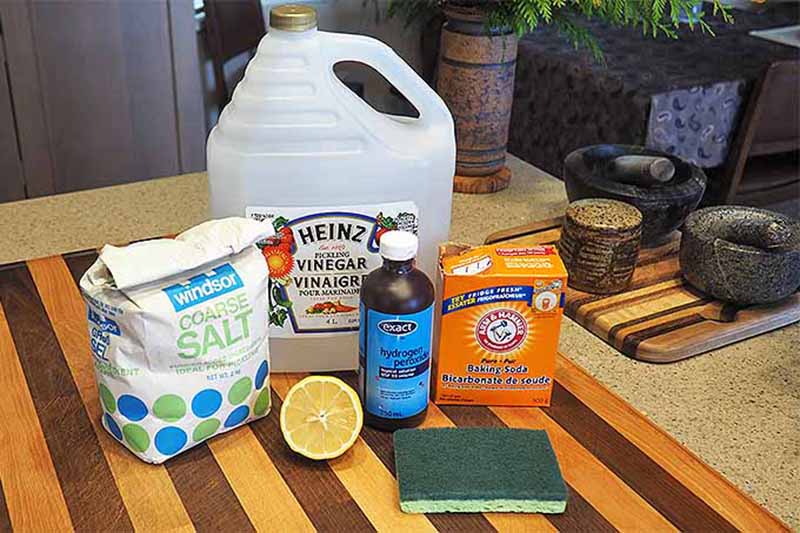
Natural yet effective products like baking soda, salt, vinegar, and fresh lemon juice are all food-safe options.
These ingredients are also great for removing lingering odors left behind from cutting flavor intensives, such as garlic, onions, and herbs. They are also effective for thoroughly cleaning after you prepare various types of seafood and animal proteins.
And when mixed together, baking soda and lemon juice make a mighty combo for lifting stains from plastics as well as wood.
Let’s take a closer look at each of these natural options:
Vinegar
Wipe off any excess food or liquid from the surface.
To clean with vinegar, use a 50/50 solution of white vinegar and water mixed in an empty spray bottle.
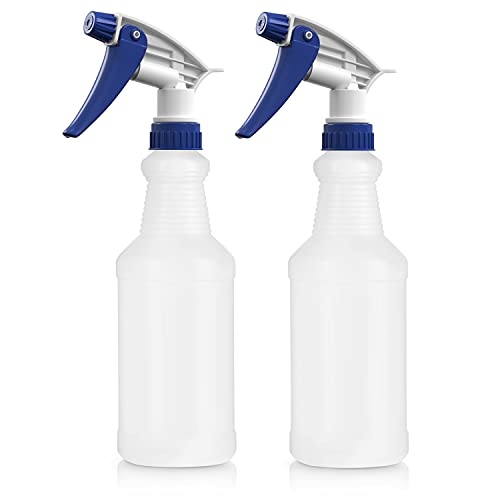
Bar5F 16-ounce Plastic Spray Bottles, 2-pack, available on Amazon
A spray bottle is a helpful little tool to spread a thin and even distribution of your solution. You can find inexpensive plastic options on Amazon, like this 2-pack set with adjustable head sprayers.
Or treat yourself to a gorgeously designed tool, like Full Circle’s Bottle Service reusable glass spray bottle with a bamboo handle, available now from Sur La Table.
Full Circle Bottle Service 16-ounce Glass Spray Bottle, available on Sur La Table
After filling the bottle, spray the surface generously and scrub well with a clean nylon brush or nylon pot scrubber.
Wipe the surface clean, then rinse it with hot water. Wipe any excess water dry with a clean cloth or sponge. Allow to air dry, or pat dry with clean and absorbent kitchen or paper towels.
Salt or Baking Soda
Wipe off any excess food or liquid from the surface.
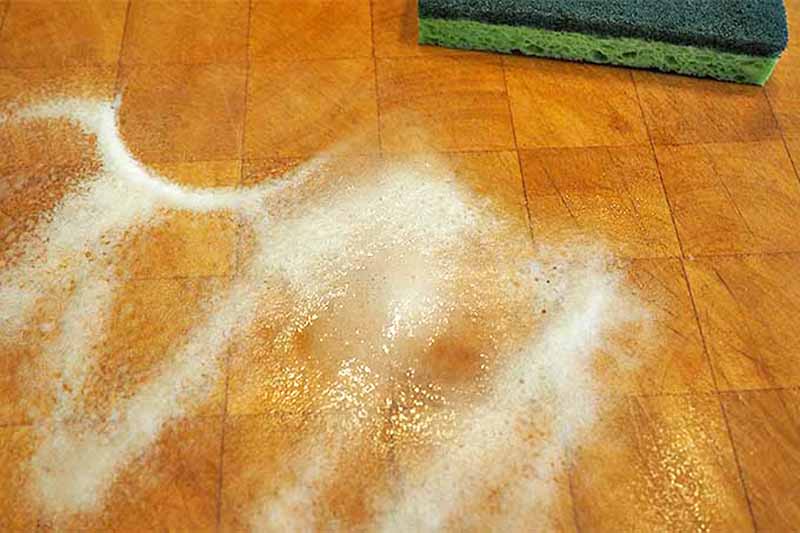
Sprinkle coarse salt or baking soda generously onto a dry surface. Dip a stiff nylon brush or pot scrubber into hot water and scrub vigorously.
Rinse and dry as above.
Stain or Odor Removal
Sometimes, a little extra oomph is needed to lift out pesky stains and odors!
Lemon juice combined with baking soda or salt does the trick– the citric acid in the lemon adds extra scrubbing power that will lighten stains and successfully deodorize.
Wipe off any excess food or liquid from the surface.
After sprinkling with baking soda or salt, simply use a halved lemon to scour the board. Rinse with clear, hot water and dry as described above.
Protein Cleanup
To prevent bacterial cross-contamination of foods, a thorough cleanup of your butcher block is a must after handling any raw animal proteins, including seafood, poultry, and other types of meat.
To cut through grease and residue left by animal proteins, lay down a generous amount of coarse salt on the surface, then rub it in well with a sliced lemon.
Wash your board with hot and soapy water using an antibacterial dish detergent, then rinse thoroughly with hot water. Wipe away any excess water, then dry.
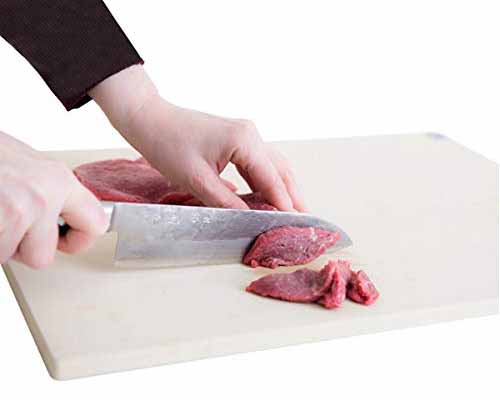
Sani-Tuff All-Rubber Cutting Board, available on Amazon
For the best hygiene practices – and to cut down on cleaning time! – you might want to invest in a separate, knife-friendly hygienic mat dedicated to handling raw proteins only.
Select a material that can safely handle very hot water or a dishwasher cycle, such as rubber or BPA-free thermoplastic.
We recommend an all-rubber mat like the Sani-Tuff for its non-porous, nontoxic, NSF-certified, and USDA-approved construction, which is available on Amazon.
Another good choice for proteins is the OXO Good Grips Everyday Cutting Board, available to purchase directly from OXO.
OXO Good Grips Everyday Cutting Board, available on OXO
Made of BPA-free polypropylene, the non-porous surface resists odors and stains and won’t dull knife blades. When you’re finished, just pop it in the dishwasher, and it’s goodbye bacteria!
If you do place proteins on a wooden cutting surface, use the salt and lemon combo mentioned above for cleaning, and the following guidelines below for sterilizing.
Sterilizing Wood
After any use with animal proteins, or every 7 to 10 days, the surface of your wooden cutting boards and butcher blocks should be sterilized.
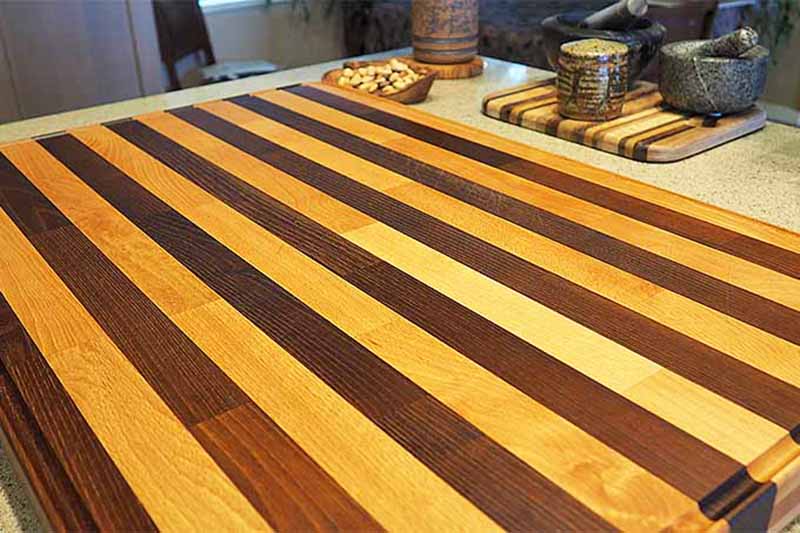
While natural products such as lemon juice, tea tree oil, and vinegar have some disinfectant properties, they aren’t effective against powerful pathogens such as E. coli, salmonella, or staphylococcus – all of which can be present in food preparation, and particularly in raw meat.
To effectively eliminate these scary bugs, you want to use a product that’s on the EPA’s list of registered disinfectants.
For wooden surfaces, this means a diluted solution of chlorine bleach, or a combination of vinegar and hydrogen peroxide.
Bleach
Diluted bleach is extremely effective when used as a disinfectant to combat the common bugs of cold and flu season, as well as for showing the dangerous bacteria mentioned above the door.
However, it can cause respiratory and skin irritation, and is also potentially hazardous to the environment and animals. Be sure to use it sparingly and responsibly.
To disinfect with bleach, rubber gloves should be worn, cleaning should be done in a well-ventilated area, and a mask should be donned by those with respiratory sensitivities.
Mix 1 tablespoon of chlorine bleach with 1 quart of water in a spray bottle. Liberally spray the entire infected surface.
Allow this to sit for 3 to 5 minutes, then scour well with a stiff brush or a clean nylon pot scrubber. Wipe up the solution with a clean cloth or sponge, then rinse the surface with hot water. Shake off any excess water, and allow to air dry or gently pat dry with absorbent kitchen or paper towels.
Vinegar and Hydrogen Peroxide
A greener and gentler alternative, and my personal favorite, is the one-two punch of white vinegar and hydrogen peroxide.
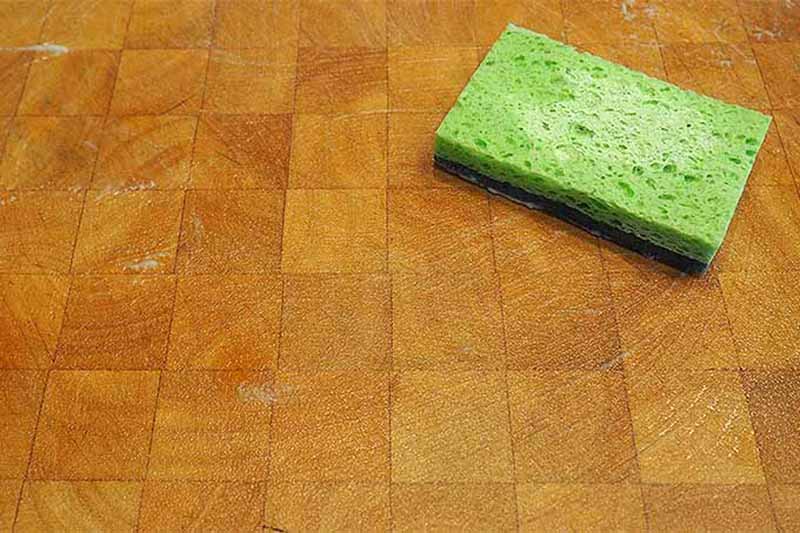
Effective against mold, common germs, and the above-mentioned dangerous bacteria, a hydrogen peroxide concentration of 3% or less is recommended. This is the most common solution found in drugstores and pharmacies.
At this strength, hydrogen peroxide is biodegradable, friendly to people and the environment, and no protective gear is needed when handling.
First, spray the surface with a solution of 50 percent white vinegar and 50 percent water, and wipe down.
After wiping with vinegar, slowly pour hydrogen peroxide over the surface, spreading it evenly. Allow it to bubble and oxidize, then rub it into the surface with a stiff brush or clean nylon pot scrubber.
Rinse with clean, hot water, wipe up the excess, then dry.
Regular Maintenance
In addition to regular cleaning, deep cleaning, and sterilization, wood cutting boards need to be oiled regularly.
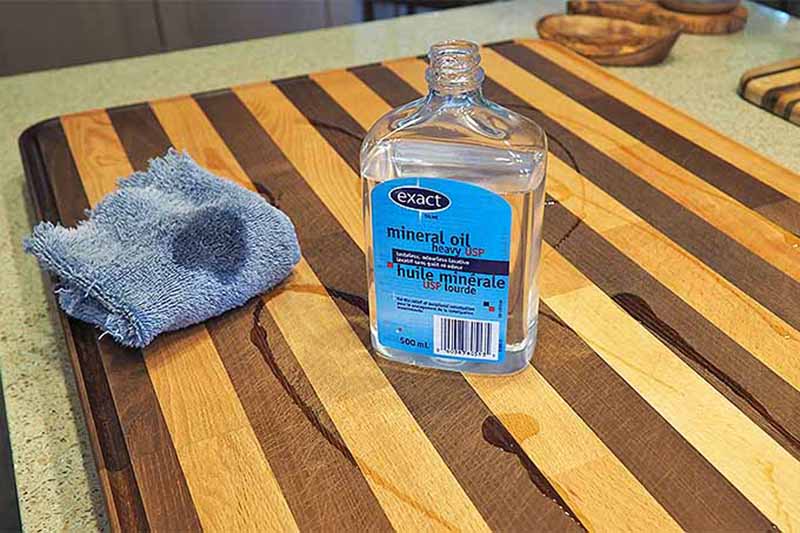
This will moisturize their cellular structure and help to prevent cracking, splitting, and warping.
Depending on how heavily your butcher block is used, a weekly or biweekly treatment with oil is recommended.
Use food-grade mineral oil, beeswax, or a professionally formulated conditioner like Boos butcher block cream, available on Amazon in a single 5-ounce tube or in a pack of three.
After cleaning and drying, rub mineral oil in liberally, going with the wood grain. Keep applying until the wood won’t absorb any more oil.
Boos Butcher Block Cream, 5-ounce tube, available on Amazon
Wipe off any excess and allow the oil to soak in overnight, then buff along the grain with a soft, clean cloth before using the board again.
In between mineral oil coats, you can also use a stick of natural beeswax to rub into the grain and pores of the surface. This provides additional protection against liquids. After you rub the beeswax in, buff it to a nice glow with a clean cloth.
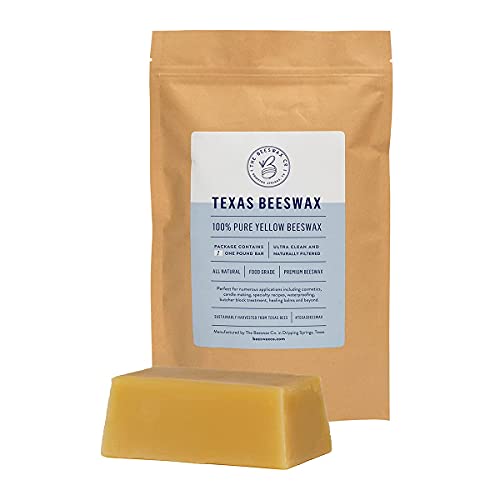
Texas Beeswax All-Natural Unbleached Beeswax, 1-pound bar, available on Amazon
Texas Beeswax sells an all-natural unbleached food-grade beeswax, available to purchase now on Amazon in a 1-pound or 5-pound bars.
And here is one extra tip for new cutting surfaces:
When you first get a new wooden board or block, the rule of thumb is to oil and/or wax daily for the first week, once a week for the next month, and once a month thereafter.
A (Potential) Family Heirloom
With its warm tones and kind knife surface, a wood cutting board is a beautiful and practical tool for the kitchen.
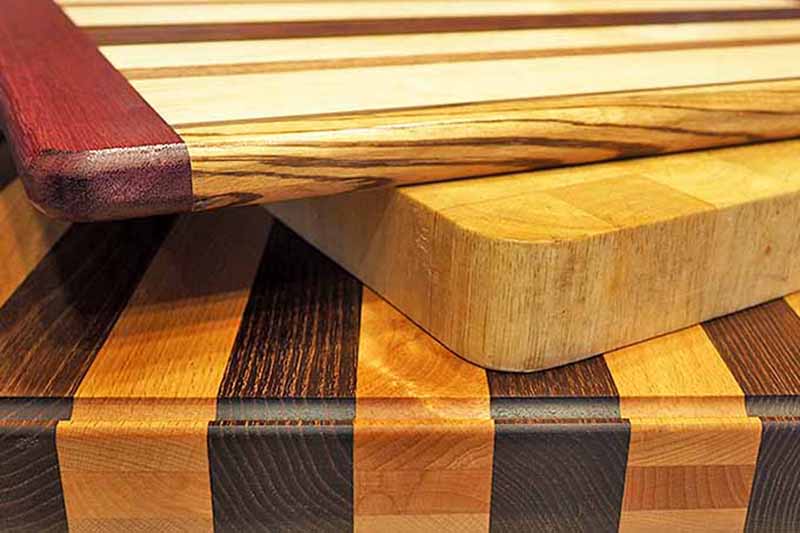
Care for it with daily cleaning, regular sanitizing, and routine maintenance, and a well-made board will last for decades.
It may even become a family heirloom!
I urge you to consider getting a separate rubber or plastic mat for prepping fish, seafood, and animal meat – they provide an excellent surface for food safety, and free up time otherwise spent cleaning and sanitizing.
Do you folks have any questions about wood cutting boards? Drop us a note in the comments below, and check out our article on how to choose the best wood cutting board for your kitchen. It has all the details you need to consider before making a purchase.
Let’s get into more gear talk! If you need help with the care and cleaning of your other precious kitchen tools and appliances, review these articles next for the best advice:
- 17 Practical Tips for Using Your Dishwasher
- Cleaning and Caring for Your Cast Iron and Carbon Steel Pans
- Cleaning Tips for Small Kitchen Appliances
Photos by Lorna Kring, © Ask the Experts, LLC. ALL RIGHTS RESERVED. See our TOS for more details. Product photos via Amazon, Sur La Table, and OXO. Originally published on January 9, 2018. Last updated on April 28, 2023. With additional writing and editing by Nikki Cervone.
About Lorna Kring
Recently retired as a costume specialist in the TV and film industry, Lorna now enjoys blogging on contemporary lifestyle themes. A bit daft about the garden, she’s particularly obsessed with organic tomatoes and herbs, and delights in breaking bread with family and friends.

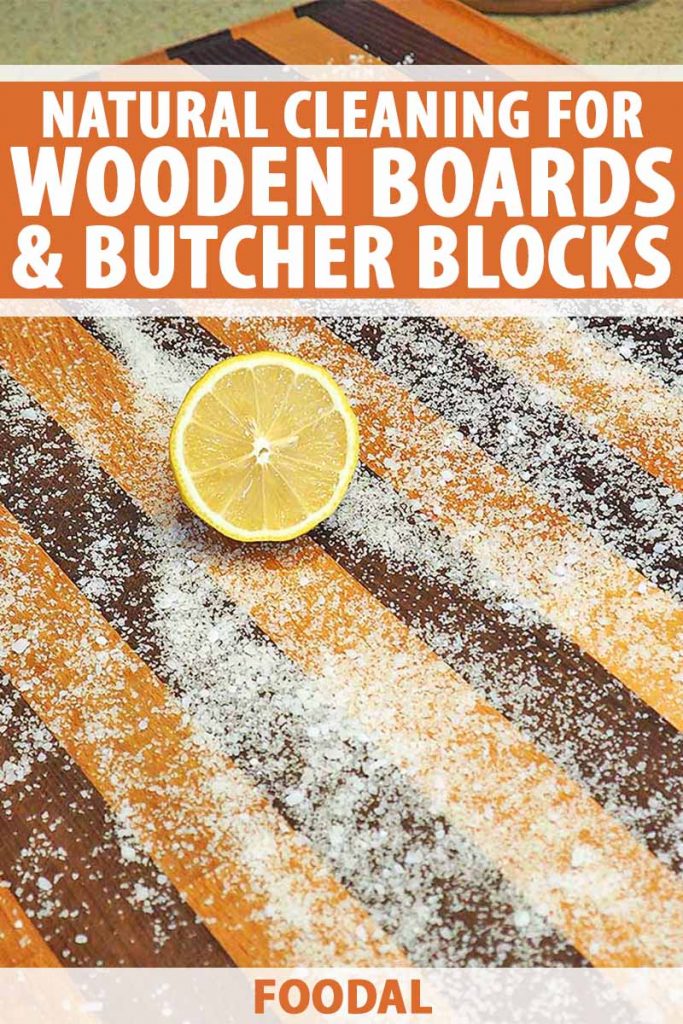
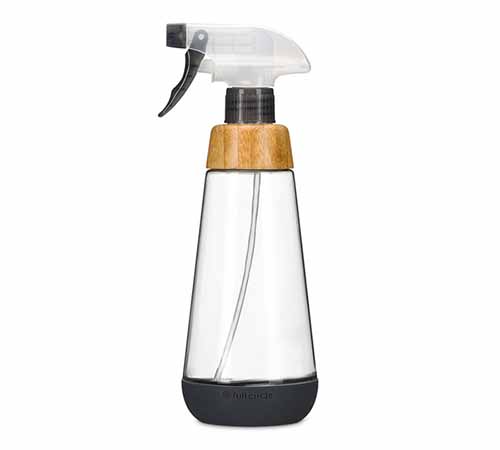
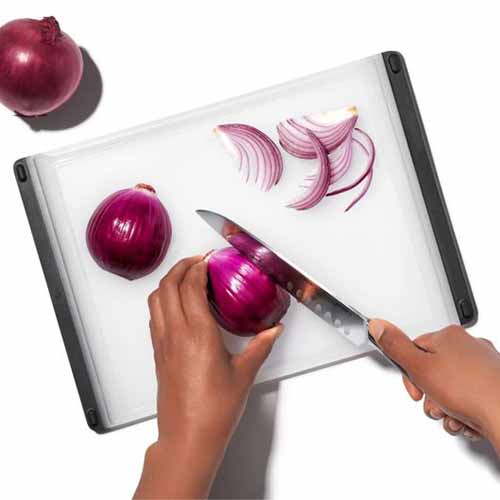


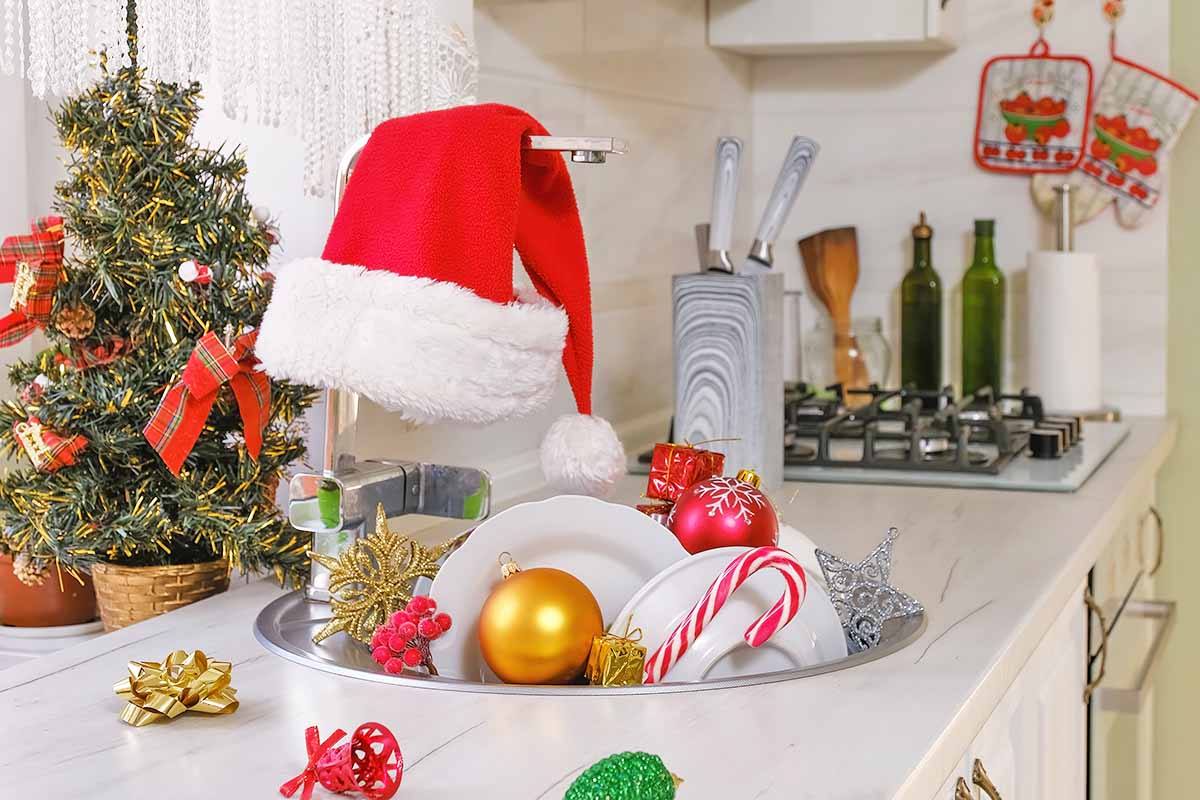
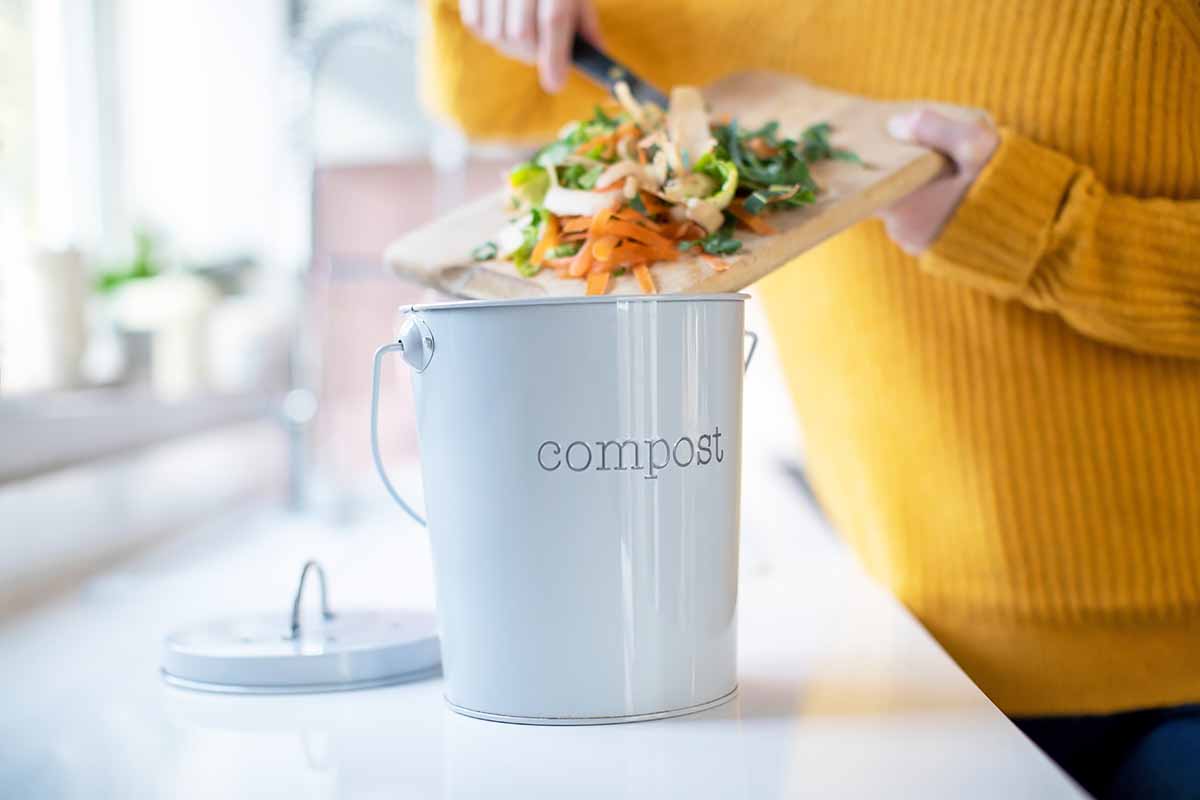
Vinegar works really great. Sometimes I also use lemon juice.
Such a helpful article. Thank you.
how often do you re-oil chopping boards between cleaning them
It depends on the amount of use Tucker, but in general I oil weekly.
But it also depends on the types of food being used – my board gets treated every couple of days when processing acidic tomatoes at harvest time.
With use, the high-traffic area of wooden blocks take on a dull, matte appearance – and this is what I look for to prompt an application of oil.
Also, I apply a board butter every six weeks or so for deeper conditioning.
Thanks for asking!
I do a deep cleaning on mine about once a month.
1. I wash with soapy water and rinse and then dry off
2. I then cover the board with coarse salt and use half a lemon with juice as a scrub brush and let it sit for 5 minutes.
3. then I remove the salt/lemon juice with a paper towel.
4. I was the board again with warm soapy water and dry.
5. Then I apply Boos Oil and let it soak in overnight.
6. Next day I remove the excess oil.
7. Then I apply Boos Wax and let it soak in overnight.
8. Next day I remove the excess wax.
That’s it done. Good for another 4 to 6 weeks. When I use the board normally, I just wash it with warm soapy water and immediately dry it. I also do not put the board under direct water coming out of the tap. I wet the scrubber and use the water from that to clean the board, that way I can control how much water gets on the board and absorbed into it.
I just purchased a boos block. It is walnut. When I started to treat it with boos oil and cream I noticed the stain is coming off. What do I do? Is that normal? I can’t get a response from boos,
Hey Patricia, no it isn’t normal for the stain to be coming off – it should be sealed into the wood before it leaves the manufacturing facility.
Personally, I wouldn’t use a board in that condition. There’s no mention on the John Boos website of the type of stain or finish they use, so I would err on the side of caution.
There’s a toll free number on their contact page as well as email and snail mail addresses… have you tried all those options?
Boos has a very good reputation, but unfortunately, I think your only solution is to return or exchange your board – chances are, the issue is an anomaly.
Thanks for asking – hope you get a positive response from them.
Can I use coconut oil instead of mineral oil for my chopping board?
Unfortunately cooking oil will go rancid, so it should not be used to care for wood.
Thank you for the informative blog on caring for wood cutting boards. I found it very helpful. I’m curious to know if there are any oils or products you recommend for conditioning and maintaining the wood’s appearance and longevity? Thanks in advance!
Hey Sarder, yes I recommend a commercial conditioner such as Boos Block Board Cream, made of natural beeswax and mineral oil – you can find a link to it in the Regular Maintenance section above.
You can also use straight beeswax or plain, food grade mineral oil.
Personally, I like a combination of beeswax and mineral oil (like the Board Cream) to deeply penetrate and protect the wood.
Thanks for your comments and question!
Thanks a lot.
My wood cutting board was in a basement and got mold spots on it. I sanded it first (spots did not come out) then tried bleach and they did not come out. I used some oxalic acid (spot treatment) and they were removed! I neutralized with baking soda, and sanded 320 grit.
After this treatment I am not sure this was the right thing to do on a food surface. Can you advise?
Thank you!
Hi Carol, good to know the oxalic acid removed the mold stains!
To finish refurbishing your board, give it a final sanding using ultra fine, 800 or 1000 grit paper. Wipe clean with a damp cloth after sanding.
After sanding, apply a “drying” oil… drying oils penetrate deeply into the wood, protecting it from the inside and typically only needs a single application.
Popular food-safe, vegetable-based drying oils include tung oil and raw linseed oil – but not boiled linseed oil, which has additives you don’t want on a food surface. Both are available at most hardware and woodworking stores.
After applying the drying oil (follow the product’s instructions for application details), a non-drying oil or board conditioner is used to help to seal and protect the surface. These non-drying oils need to be applied more frequently because they’re surface applications, and they’re used for regular maintenance.
Avoid using cooking oils, like canola or olive oils, as they can go rancid.
Instead, use food grade mineral oil applied to the grain with a soft rag. Rub it in until absorbed then use a dry cloth to lift any residue. Mineral oil is available at pharmacies and grocery stores.
A good conditioning alternative to straight mineral oil is to combine it with beeswax or carnauba wax – the wax has extra conditioning properties for the wood and provides a barrier agains acidic ingredients, water, and so on. Both waxes mentioned are available at hardware stores and some health food stores.
You can also purchase commercial board conditioners or make your own “butter” by melting one part wax in a double boiler then mixing it with four parts mineral oil. Store in a glass jar with a tight fitting lid and keep in a cool, dark cupboard.
Apply your conditioner or butter after the drying oil then use it for regular maintenance as needed.
That should get your board out of the basement and back into the kitchen… and thanks for reading!